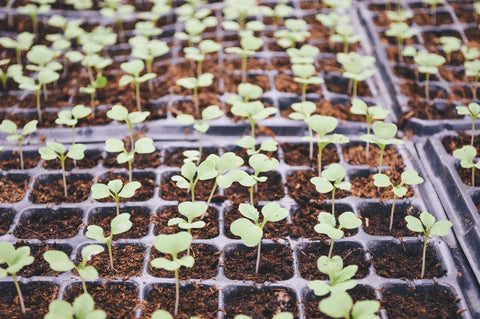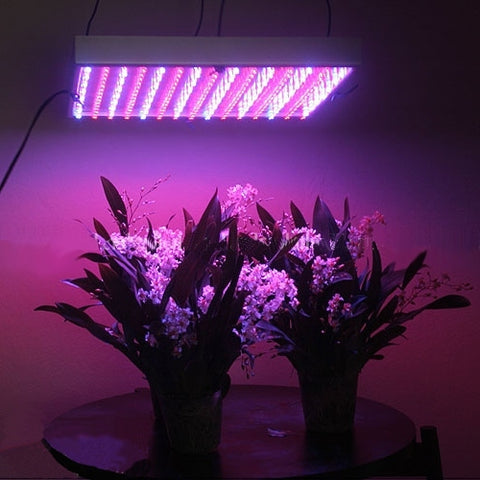
Why LED Lights?
Using LED lighting is ideal for plant growth as it's one of the most efficient artificial light sources available and allows you to have full control over the type of light that the plants receive. Using LED lights allows you to use specific frequencies of light to aid in certain parts of plant development. Plants use different wavelengths of light to aid in different elements of plant growth.

Different Wavelengths
Plants would usually naturally receive light from the Sun. The light emitted from the sun is white light which is a combination of red, green and blue wavelengths of light. This is why plants naturally grow when outdoors and exposed to sunlight.
Plants use red wavelengths (~650nm - 700nm) of light for flowering and budding, green wavelengths ( - ) of light are mostly reflected but partially used in photosynthesis. Blue wavelengths (430nm - 460nm) are useful for aiding plant growth and encouraging photosynthesis.
Other Factors
There are many other advantages and disadvantages to using LED lighting for plant growth. Often the LEDs used are high powered ones which produce a lot of heat so some form of a cooling system is needed. Using an artificial lighting setup also allows you to simulate optimum day and night cycles and also control other factors such as the direction and distribution of the light on the plants. While using artificial light isn't as popular as traditional farming with growing populations and limited land growing techniques such as vertical farming are already growing in popularity in a number of countries around the world.

